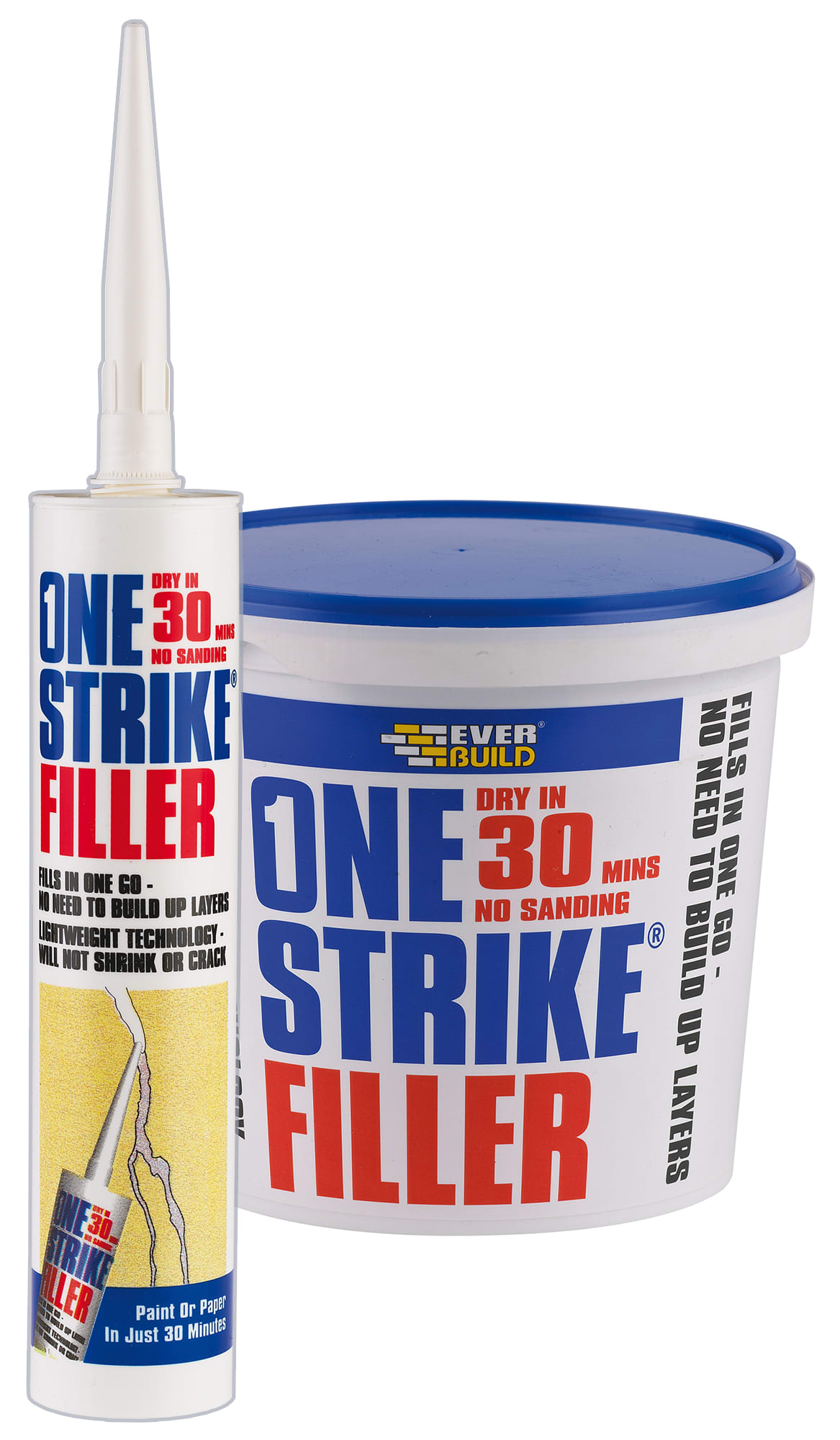Fillers
(6 Products)Fillers provide smooth, durable surfaces by repairing gaps, cracks, and surface defects in substrates prior to finishing. Used across building, decorating, and maintenance works, fillers ensure even bases for painting, plastering, or coating applications. Available in various formulations for interior and exterior use, they enhance substrate performance, appearance, and longevity through effective surface preparation.
Understanding Fillers
Fillers are preparatory compounds formulated to restore or level uneven surfaces before the application of finishes such as paint, plaster, or wallpaper. They are designed to bond with substrates like plasterboard, masonry, timber, and metal, creating a stable base that conceals imperfections.
Depending on composition, fillers may set through drying, chemical reaction, or polymerisation, ensuring adhesion and hardness appropriate to the substrate type and environmental exposure.
Modern fillers incorporate lightweight binders and micro-sphere technologies that allow deep fills in a single application without shrinkage or cracking. These formulations balance rapid drying with easy sanding, delivering efficient surface correction in both professional and DIY contexts.
Specialist variants include flexible, exterior-grade, and ready-mixed options for compatibility with timber, concrete, and composite surfaces.
Within building maintenance and finishing trades, fillers are integral to surface preparation workflows. They are used for both structural repair of small defects and aesthetic correction prior to finishing, complementing other surface treatment materials such as primers, sealants, and decorative coatings.
Material Range
- Lightweight Fillers: Ready-mixed polymer-based compounds for fast-drying, shrink-resistant repairs in interior applications.
- Deep Fill Compounds: Formulated for repairing large gaps or deep voids without multiple applications.
- Exterior Fillers: Cementitious or resin-modified compositions designed for moisture resistance and weather durability.
- Fine Surface Fillers: Smooth finishing materials used to eliminate minor surface imperfections before painting.
- Flexible Fillers: Elastic-modified variants that accommodate movement in timber or jointed substrates.
- Multi-Purpose Fillers: General-use products suitable for a variety of substrates including plaster, brick, and wood.
Key Features
- Adhesion: Strong bond formation on porous and non-porous surfaces ensures stability and finish integrity.
- Workability: Easy application and sanding for efficient preparation and time-saving performance.
- Shrink Resistance: Formulated to maintain surface level without cracking during drying or curing.
- Durability: Resistant to impact and environmental changes depending on grade and binder composition.
- Compatibility: Suitable for use under paints, coatings, and wallpapers with appropriate substrate priming.
- Drying Time: Rapid setting options available to support fast-track finishing schedules.
Typical Applications
- Surface Repairs: Filling cracks, holes, and joints in plaster, brickwork, and timber prior to decoration.
- Decorative Preparation: Creating smooth, defect-free surfaces for painting or wallpapering.
- Exterior Restoration: Repairing facades, masonry joints, and outdoor substrates exposed to moisture.
- Joinery Works: Correcting imperfections in timber frames, architraves, and skirting before finishing.
Specification & Standards
- BS EN 13963: Specifies performance requirements for jointing and filling materials for gypsum boards.
- BS EN 998-1: Covers rendering and plastering mortars, including repair filler formulations.
- ISO 15148: Relates to capillary water absorption, relevant for assessing filler suitability in moisture-exposed environments.
- Manufacturer Technical Data Sheets: Provide curing, coverage, and application parameters based on formulation.
Related Materials and Construction Uses
Fillers are commonly applied alongside jointing compounds, skim coats, and primers within wall finishing systems. They integrate with sealants and adhesives in interior and exterior repair works, supporting the performance of decorative coatings and protective finishes.
In refurbishment and renovation, fillers serve as the intermediate preparation layer that ensures adhesion and uniformity across diverse substrate conditions.
Frequently Asked Fillers Questions
How Long Do Fillers Take To Dry?
Drying time varies by product type, layer thickness, and temperature. Lightweight ready-mixed fillers can be paintable within 30 minutes, while deep-repair or exterior fillers may require several hours before sanding or painting.
Can Fillers Be Applied In Deep Repairs?
Deep-repair fillers are designed for applications exceeding 10–20mm in one pass. For very deep holes, apply in layers, allowing each coat to dry fully before reapplication to prevent shrinkage or cracking.
Do Fillers Shrink Or Crack After Drying?
Quality fillers formulated with lightweight polymers or resins minimise shrinkage. Overfilling or applying too thickly can cause cracks, so following the manufacturer’s recommended maximum depth per coat is important.
Are Fillers Suitable For Use On Wood?
Yes, specific wood fillers are available for interior and exterior use. They can be sanded, stained, or painted after curing, and are often rated for use with various timber species and finishes.
Can Fillers Be Painted Over?
Most fillers can be overcoated with paint, primer, or wallpaper once fully dry. For best adhesion and finish, lightly sand and remove dust before applying the chosen coating system.
What Tools Are Needed To Apply Filler?
A filling knife or spatula is commonly used for smooth application. For larger or deep areas, use a wide-blade spreader. Cartridge fillers may require a caulking gun for precise dispensing.
How Should Fillers Be Stored?
Keep containers sealed and stored in a cool, dry place away from frost or high heat. Exposure to air can cause premature drying, reducing product shelf life and usability.

